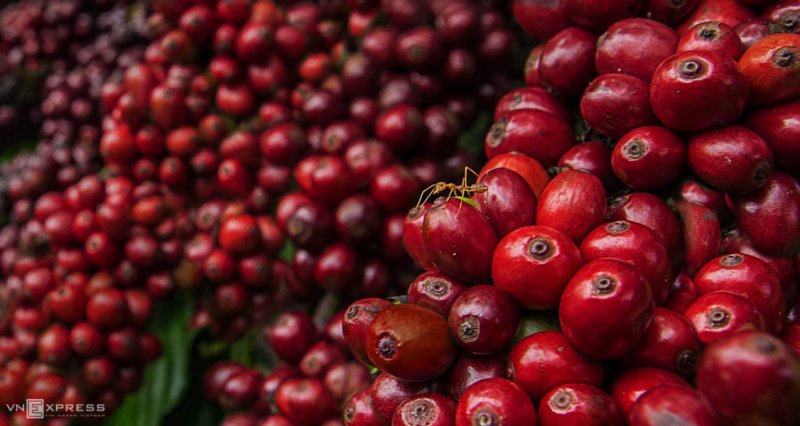
Farmers in Dak Ha District of Kon Tum Province, one of Vietnam’s largest coffee growing areas, are busy harvesting coffee cherries.
 |
|
Dak Ha District, about 20 kilometers north of downtown Kon Tum in the Central Highlands, boasts over 9,000 hectares of coffee trees, which thrive due to the suitable local climate and soil conditions. |
 |
|
The typical harvest season lasts from November to the end of December. However, this year, due to the impact of tropical storms in November, the water level in Dak Pxi River has risen, forcing some households in the district to harvest early to prevent coffee cherries rotting. |
 |
|
The joy reminiscent of harvest season. |
 |
|
The flavor of fresh red coffee cherries attracts foraging monkeys. |
 |
|
Coffee production has contributed greatly to Vietnam’s economic transformation since Doi Moi (reform) was introduced in 1986, contributing to job creation and the improvement of local livelihoods. |
 |
|
Nguyen Ngoc Thai, author of this photo collection, said his family also grows coffee and hires cherry pickers, each paid about VND70,000 – 80,000 ($3-4) per quintal. Working hard, harvesters each could pick 3 to 4 quintals of coffee cherries a day. |
 |
|
At the end of the day, a tractor transports the bags of coffee cherries home. |
 |
|
Most coffee-growing families have their own yards in which cherries are dried. |
 |
|
Harvesters rake together drying coffee cherries before they are taken away for roasting. Depending on weather conditions, the drying process can last around a week. |
 |
|
When it is less sunny, many families switch to drying coffee in a special oven to save time. |
 |
|
Dried coffee beans pass through a mill to remove impurities before being stored in a cool and dry place until roasting time. |
